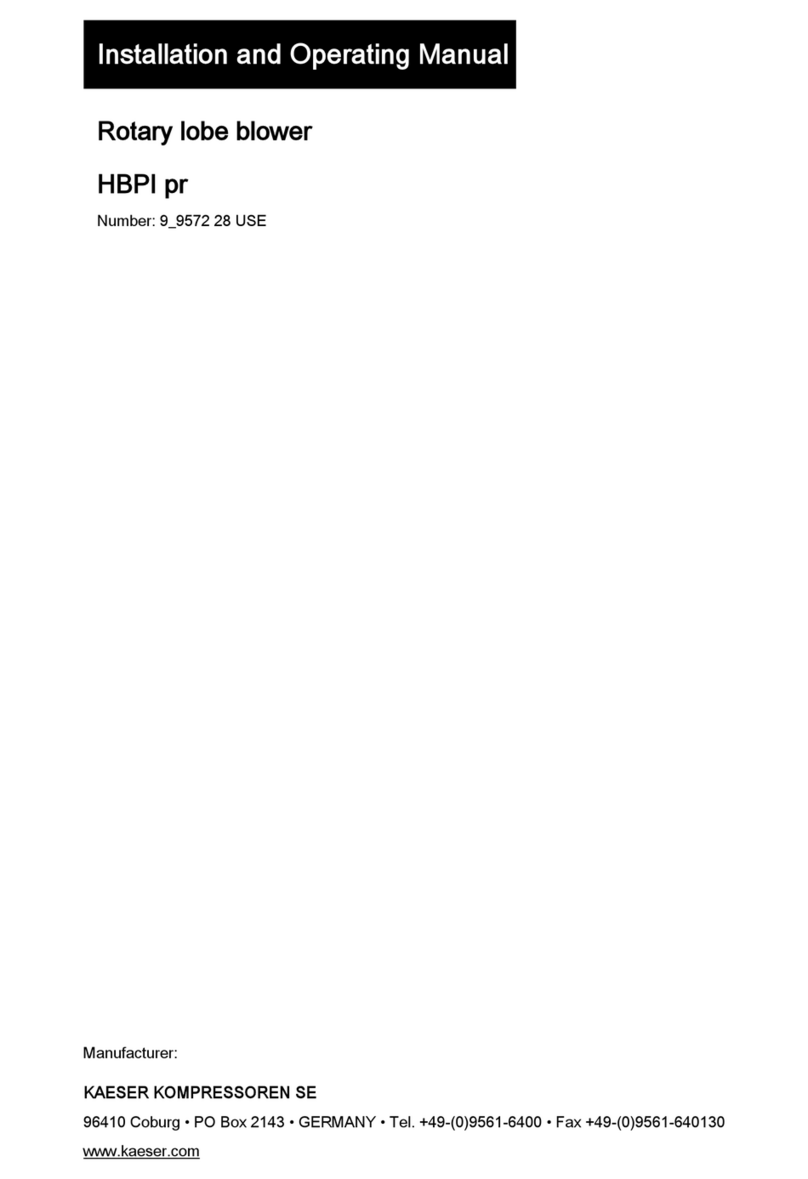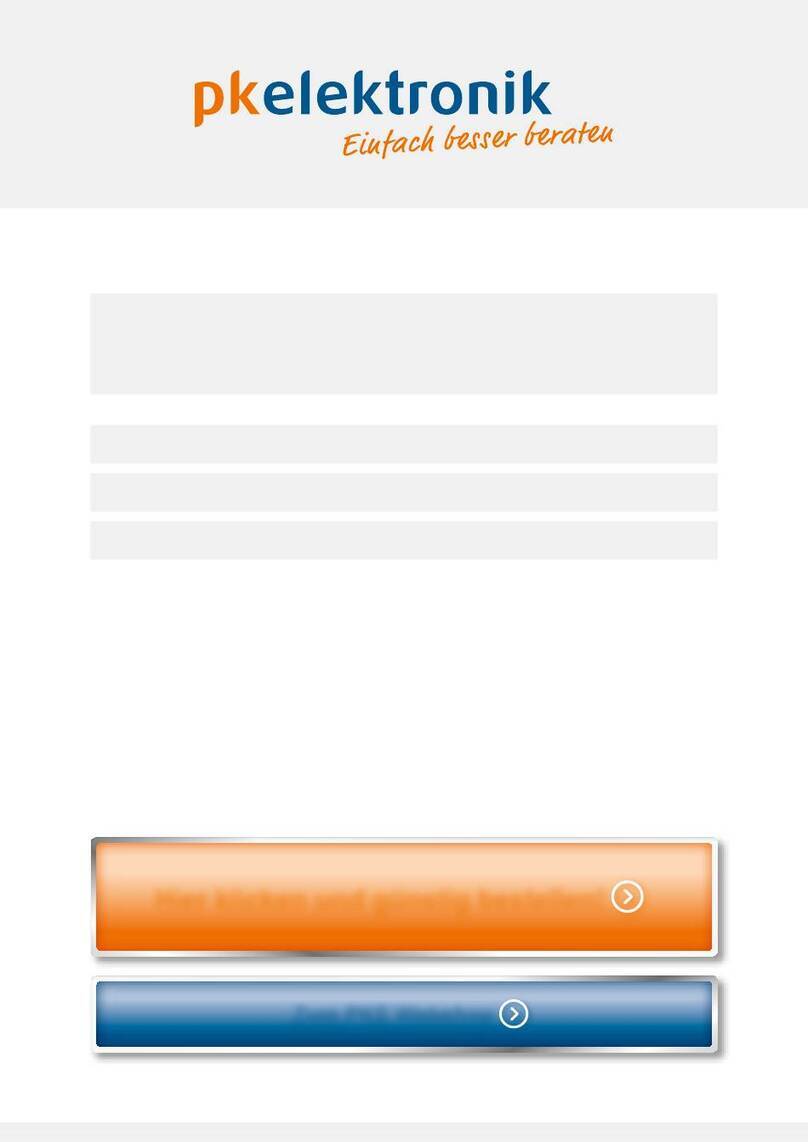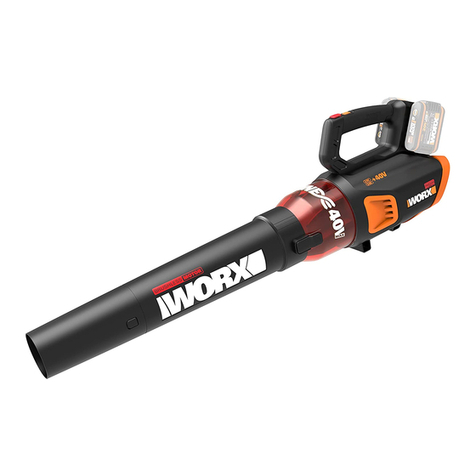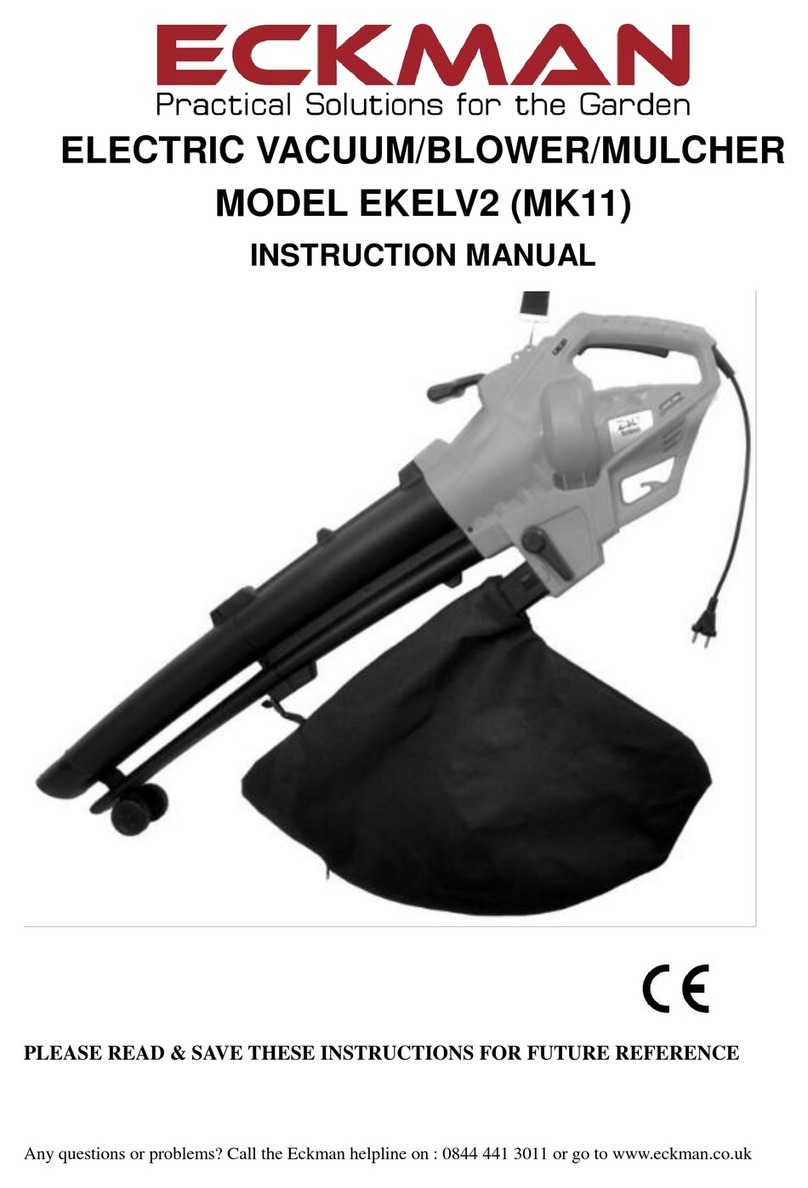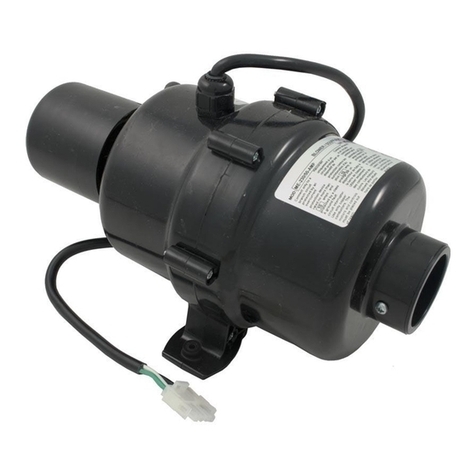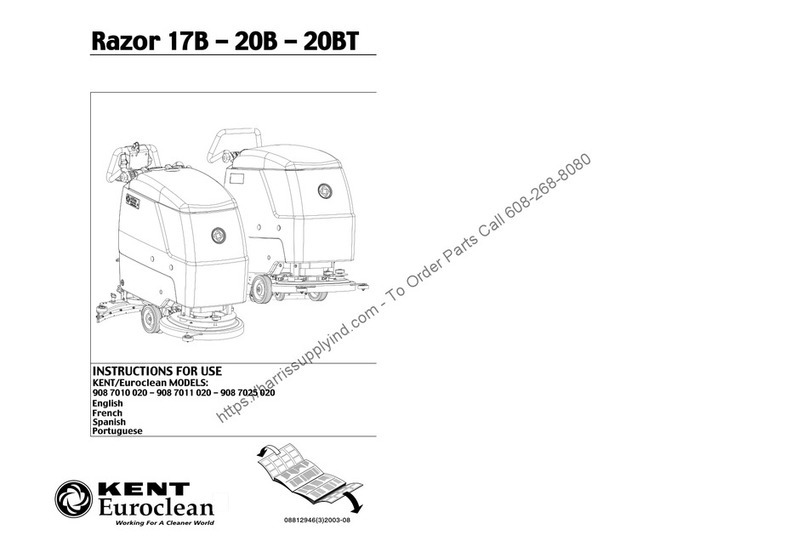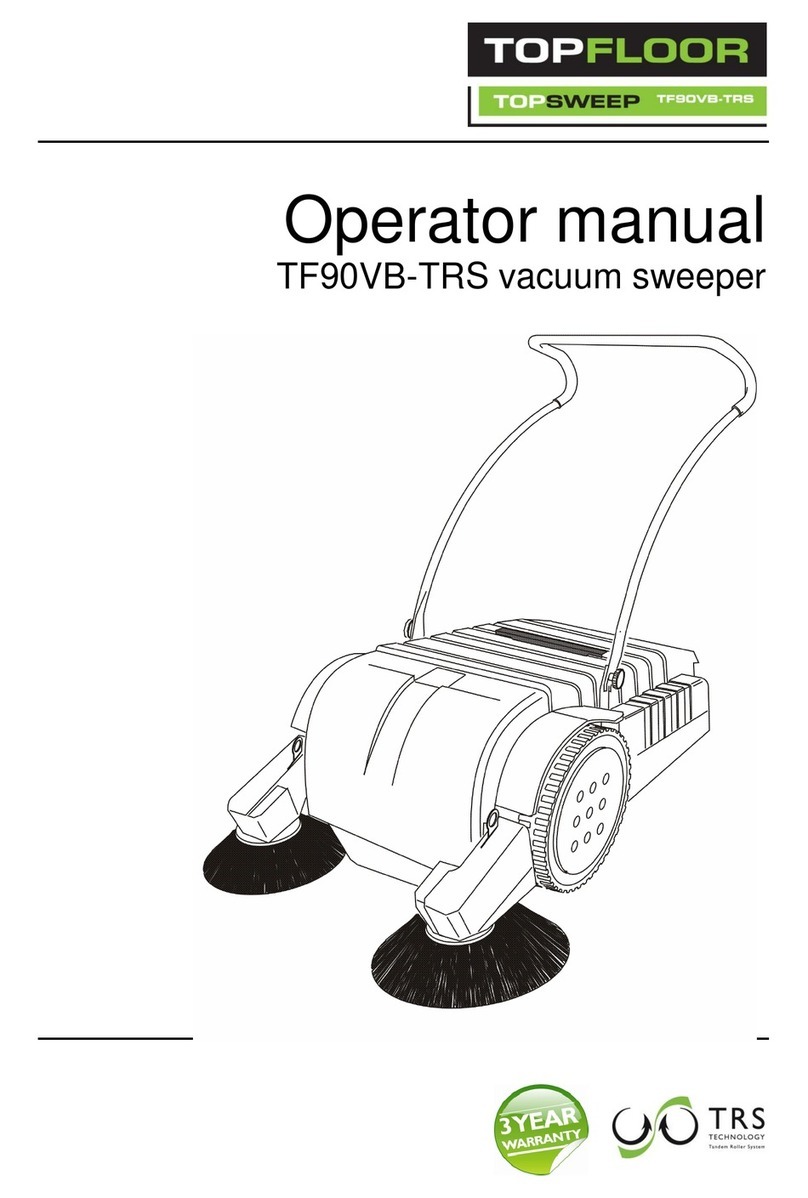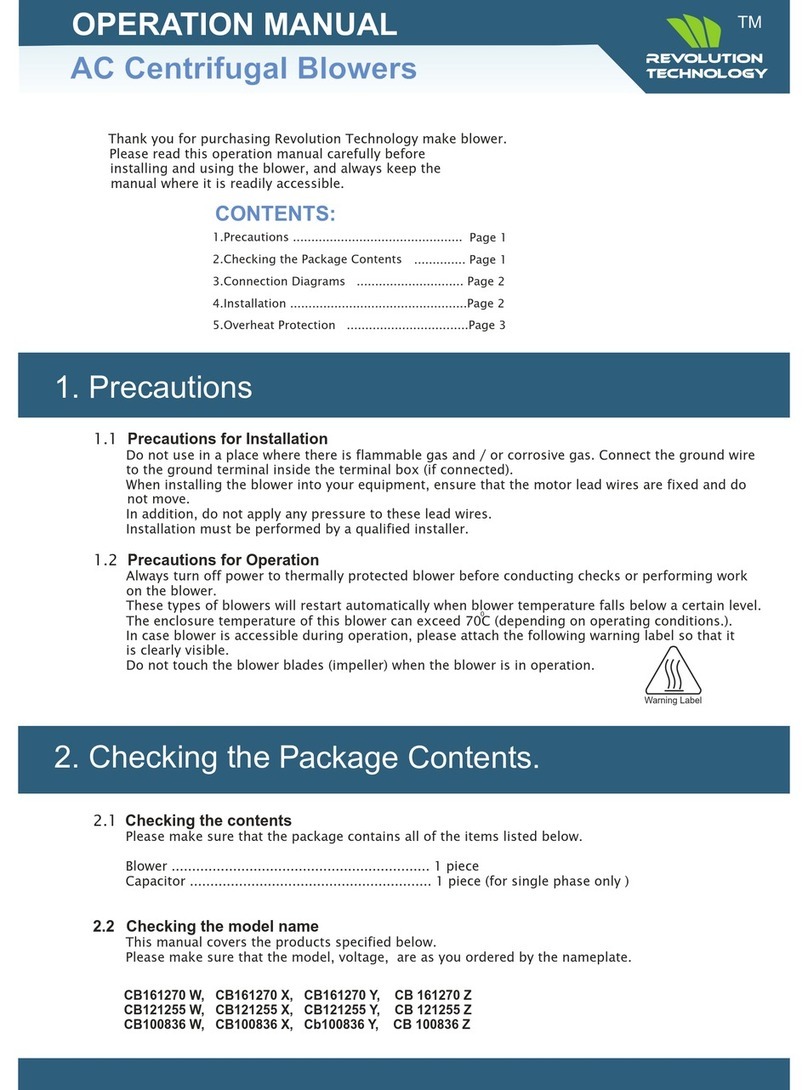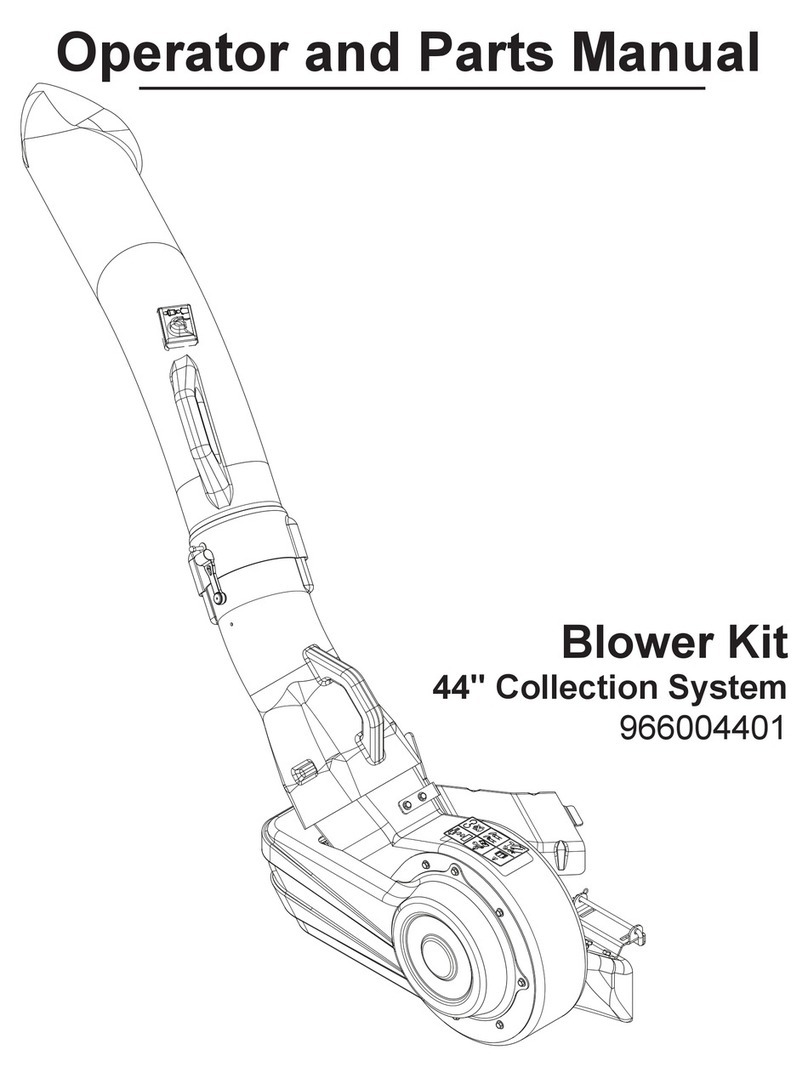KAESER KOMPRESSOREN OMEGA 4 B User instructions

/KKW/BOMBB 2.03 en SBA-OMEGA_4_B
20150401 133922

1 Regarding this document
1.1 Using this document ......................................................................................................... 1
1.2 Further documents ........................................................................................................... 1
1.3 Copyright .......................................................................................................................... 1
1.4 Symbols and labels .......................................................................................................... 1
1.4.1 Warning notices .................................................................................................. 1
1.4.2 Potential damage warnings ................................................................................ 2
1.4.3 Other alerts and their symbols ............................................................................ 2
2 Technical Specifications
2.1 Nameplate ........................................................................................................................ 3
2.2 Option codes .................................................................................................................... 3
2.3 Weight .............................................................................................................................. 4
2.4 Pressure ........................................................................................................................... 4
2.4.1 Operating mode: Vacuum ................................................................................... 4
2.4.2 Sealing, inside: Vacuum seal .............................................................................. 5
2.4.3 Sealing, inside: Vacuum and gauge pressure sealing ........................................ 5
2.5 Flow rate .......................................................................................................................... 5
2.6 Power and speeds ........................................................................................................... 5
2.7 Drive shaft load ................................................................................................................ 6
2.8 Connection dimensions .................................................................................................... 6
2.9 Temperature ..................................................................................................................... 6
2.10 Recommended oil ............................................................................................................ 6
2.11 Lubricating oil charge ....................................................................................................... 7
2.12 Ambient and intake conditions ......................................................................................... 7
2.13 Noise emission ................................................................................................................. 7
3 Safety and Responsibility
3.1 Basic instructions ............................................................................................................. 9
3.2 Intended use .................................................................................................................... 9
3.3 Improper use .................................................................................................................... 9
3.4 User's responsibilities ....................................................................................................... 10
3.4.1 To be noted when integrating in a machine ........................................................ 10
3.4.2 Observe statutory and universally accepted regulations .................................... 10
3.4.3 Determining personnel ........................................................................................ 10
3.5 Dangers ............................................................................................................................ 10
3.5.1 Safely dealing with sources of danger ................................................................ 10
3.5.2 Organisational measures .................................................................................... 12
3.5.3 Safe operation of the blower block ..................................................................... 12
3.6 Danger areas ................................................................................................................... 14
3.7 Safety signs ...................................................................................................................... 14
3.8 In emergency ................................................................................................................... 15
3.8.1 Correct fire fighting ............................................................................................. 15
3.8.2 Remove lubricating oil from the skin. .................................................................. 16
3.9 Environment protection .................................................................................................... 16
3.10 Warranty ........................................................................................................................... 16
4 Design and Function
4.1 Function ........................................................................................................................... 17
4.2 Options ............................................................................................................................. 17
4.2.1 Flow direction: vertical ........................................................................................ 18
5 Installation and Operating Conditions
5.1 Ensuring safety ................................................................................................................ 19
5.2 Determining the location .................................................................................................. 19
Contents
Number: 9_9533 23 E
Assembly and operating manual Blower block
OMEGA 4 B i

6 Installation
6.1 Ensuring safety ................................................................................................................ 20
6.2 Reporting transport damage ............................................................................................ 20
6.3 Installation options ........................................................................................................... 20
6.4 Installing the blower block ................................................................................................ 21
6.5 Installing the drive ............................................................................................................ 22
6.6 Safety devices installed by the user ................................................................................. 23
7 Initial Start-up
7.1 Ensuring safety ................................................................................................................ 25
7.2 Checking installation and operating conditions ................................................................ 25
7.3 Instructions to be observed before commissioning or re-commissioning ......................... 26
7.4 Checking direction of rotation ........................................................................................... 26
8 Operation
8.1 Switching on and off ......................................................................................................... 27
9 Fault Recognition and Rectification
9.1 Basic instructions ............................................................................................................. 28
9.2 Alarms .............................................................................................................................. 28
10 Maintenance
10.1 Ensuring safety ................................................................................................................ 30
10.2 Maintenance schedule ..................................................................................................... 30
10.2.1 Logging maintenance work ................................................................................. 30
10.2.2 Regular maintenance tasks ................................................................................ 30
10.2.3 Regular service tasks ......................................................................................... 31
10.3 Checking the oil level ....................................................................................................... 31
10.4 Replenishing lubricating oil .............................................................................................. 32
10.5 Changing the oil ............................................................................................................... 33
10.6 Checking rotors for contamination ................................................................................... 34
10.7 Documenting maintenance and service work .................................................................. 35
11 Spares, Operating Materials, Service
11.1 Note the nameplate .......................................................................................................... 36
11.2 Ordering spares and operating fluids/materials ............................................................... 36
11.3 KAESER AIR SERVICE .................................................................................................. 36
11.4 Service Addresses ........................................................................................................... 36
11.5 Declaration of Contamination ........................................................................................... 37
11.5.1 Shipment of the blower block .............................................................................. 37
12 Decommissioning, Storage and Transport
12.1 De-commissioning ............................................................................................................ 38
12.2 Packing ............................................................................................................................ 38
12.3 Transport .......................................................................................................................... 38
12.3.1 Safety .................................................................................................................. 38
12.3.2 Transporting with a crane ................................................................................... 38
12.4 Storage ............................................................................................................................. 39
12.5 Disposal ........................................................................................................................... 40
13 Annex
13.1 Dimensional drawing ........................................................................................................ 41
13.2 Design diagrams .............................................................................................................. 44
13.2.1 Operating mode: Vacuum ................................................................................... 44
13.2.2 Sealing, inside: Vacuum and gauge pressure sealing ........................................ 47
13.3 Declaration concerning contamination ............................................................................. 50
Contents
ii
Assembly and operating manual Blower block
OMEGA 4 B Number: 9_9533 23 E

Fig. 1 Location of safety signs .............................................................................................................. 15
Fig. 2 Principle of compression ............................................................................................................ 17
Fig. 3 Block overview – flow direction: vertical ..................................................................................... 18
Fig. 4 Permissible angle deviation: ....................................................................................................... 21
Fig. 5 Checking the oil level ................................................................................................................. 32
Fig. 6 Replenishing lubricating oil ......................................................................................................... 32
Fig. 7 Changing the oil ......................................................................................................................... 33
Fig. 8 Transport with a crane ................................................................................................................ 39
List of Illustrations
Number: 9_9533 23 E
Assembly and operating manual Blower block
OMEGA 4 B iii

List of Illustrations
iv
Assembly and operating manual Blower block
OMEGA 4 B Number: 9_9533 23 E

Tab. 1 Danger levels and their definition ............................................................................................... 2
Tab. 2 Nameplate .................................................................................................................................. 3
Tab. 3 Option codes .............................................................................................................................. 3
Tab. 4 Weight ........................................................................................................................................ 4
Tab. 5 Pressure ..................................................................................................................................... 4
Tab. 6 Theoretical flow rate at maximum speed .................................................................................... 5
Tab. 7 Power requirement ..................................................................................................................... 5
Tab. 8 Rotational speeds ....................................................................................................................... 5
Tab. 9 Drive shaft load .......................................................................................................................... 6
Tab. 10 Connection dimensions .............................................................................................................. 6
Tab. 11 Block discharge temperature ...................................................................................................... 6
Tab. 12 Temperature difference .............................................................................................................. 6
Tab. 13 Recommended oil ...................................................................................................................... 7
Tab. 14 Lubricating oil charge ................................................................................................................. 7
Tab. 15 Ambient conditions ..................................................................................................................... 7
Tab. 16 Permissible intake temperature .................................................................................................. 7
Tab. 17 Sound pressure level .................................................................................................................. 8
Tab. 18 Sound power level ...................................................................................................................... 8
Tab. 19 Danger areas ............................................................................................................................. 14
Tab. 20 Safety signs ................................................................................................................................ 15
Tab. 21 Installation options ...................................................................................................................... 21
Tab. 22 Installation conditions checklist .................................................................................................. 25
Tab. 23 Re-commissioning after storage ................................................................................................. 26
Tab. 24 Other faults and actions. ............................................................................................................ 28
Tab. 25 Regular maintenance tasks ........................................................................................................ 31
Tab. 26 Regular service tasks ................................................................................................................. 31
Tab. 27 Logged maintenance tasks ........................................................................................................ 35
Tab. 28 Ordering spares and operating fluids/materials .......................................................................... 36
Tab. 29 Legend, dimensional drawing ..................................................................................................... 41
Tab. 30 Legend, vacuum diagrams ......................................................................................................... 44
Tab. 31 Legend, gauge pressure diagrams ............................................................................................. 47
List of Tables
Number: 9_9533 23 E
Assembly and operating manual Blower block
OMEGA 4 B v

List of Tables
vi
Assembly and operating manual Blower block
OMEGA 4 B Number: 9_9533 23 E

1 Regarding this document
1.1 Using this document
This document, hereafter called the service manual, contains important information about all life
phases of the machine.
The operating manual is a component of the product. It describes the machine as it was at the time
of first delivery after manufacture.
➤ Keep the operating manual in a safe place throughout the life of the machine.
➤ Supply any successive owner or user with this operating manual.
➤ Please insert any amendment or revision of the operating manual sent to you.
➤ Enter details from the machine nameplate and individual items of equipment in the table in
chapter 2.
1.2 Further documents
Further documents included with this operating manual to assist in safe and sure operation of the
block are:
■ Installation declaration in accordance with applicable directives.
Missing documents can be requested from KAESER.
➤ Make sure all documents are complete and observe the instructions contained in them.
➤ Make sure you provide the data from the nameplate when ordering documents.
1.3 Copyright
This operating manual is protected by copyright. Any queries regarding the use or duplication of
this documentation should be referred to KAESER. Correct use of information will be fully suppor‐
ted.
1.4 Symbols and labels
1.4.1 Warning notices
Warning notices indicate three levels of danger signified by the signal word.
■ DANGER
■ WARNING
■ CAUTION
1. DANGER!
The type and source of the imminent danger is shown here!
The possible consequences of ignoring a warning are shown here.
The signal word "DANGER" indicates that death or severe injury can result from ignoring the
warning.
➤ The measures required to protect yourself from danger are shown here.
1 Regarding this document
1.1 Using this document
Number: 9_9533 23 E
Assembly and operating manual Blower block
OMEGA 4 B 1

2. Always read and comply with warning instructions.
Signal term Meaning Consequences of non-compliance
DANGER Warns of an imminent danger Will result in death or severe injury
WARNING Warns of a potentially imminent
danger
May result in death or severe injury
CAUTION Warns of a potentially dangerous
situation
May result in moderate physical injury or damage
to objects
Tab. 1 Danger levels and their definition
1.4.2 Potential damage warnings
Contrary to the warnings shown above, damage warnings do not indicate a potential personal in‐
jury.
Damage warnings have only one danger level identified with this signal term:
■ NOTE
1.
NOTICE!
The type and source of the imminent danger is shown here!
Potential effects when ignoring the warning are indicated here.
➤ The protective measures against the damages are shown here.
2. Carefully read and fully comply with warnings against damages.
1.4.3 Other alerts and their symbols
This symbol indicates particular important information.
Material Here you will find details on special tools, operating materials or spare parts.
Precondition Here you will find conditional requirements necessary to carry out the task.
The conditions relevant to safety shown here will help you to avoid dangerous situations.
➤ This symbol is is placed by lists of actions comprising one stage of a task.
In lists of actions with several stages the sequence of actions is numbered.
Information related to just one option is marked with a symbol (e.g. B7 indicates that this sec‐
tion refers only to blower blocks with a drive shaft left). Option codes used in this service man‐
ual are explained in chapter 2.2.
Information referring to potential problems are identified by a question mark.
The cause is identified in the help text ...
➤ ... as is a remedy.
This symbol refers to important information or measures concerning environmental protec‐
tion.
Further information Further subjects are introduced here.
1 Regarding this document
1.4 Symbols and labels
2
Assembly and operating manual Blower block
OMEGA 4 B Number: 9_9533 23 E
Option B7

2 Technical Specifications
2.1 Nameplate
Two nameplates are attached to the enclosure body at the control side of the blower block.
➤ Enter here the nameplate data as a reference:
Feature Value
Type
Material no.
Serial No.
Year of manufacture
Equipment no.
Tab. 2 Nameplate
2.2 Option codes
The table contains a list of possible options.
The nameplate shows any options installed.
➤ Enter options here as a reference.
Option Option code Available?
Flow direction: vertical B5 ✓
Drive shaft: left B7
Drive shaft: right B8
Direction of rotation: left B11
Direction of rotation: right B12
Operating mode: Vacuum B14 ✓
Rotors: 2-lobe B15 ✓
Material, rotors: Spheroidal graphite iron B17
Material, rotors: Stainless steel B18
Material, enclosure: Grey cast iron B19
Material, enclosure: Ni-Resist B20
Sealing, inside: Vacuum seal B23
Sealing, inside: Vacuum and gauge pressure sealing B24
Sealing, outside: Radial shaft sealing ring FKM B25
Sealing, outside: Radial shaft sealing ring PTFE B26
Sealing, outside: Sliding ring B27
Oil sight glasses, position: left B28
Oil sight glasses, position: right B29
available: ✓
not available: —
2 Technical Specifications
2.1 Nameplate
Number: 9_9533 23 E
Assembly and operating manual Blower block
OMEGA 4 B 3

Option Option code Available?
Oil sight glasses, position: left/right B30
Oil sight glasses, design: flat B31
Oil sight glasses, design: domed B32
available: ✓
not available: —
Tab. 3 Option codes
2.3 Weight
The weight of the blower block depends on the materials used.
Weight [kg]
Material OMEGA
41 B
OMEGA
43 B
Rotors: Spheroidal graph‐
ite iron
(Option B17);
Enclosure: Grey cast iron
(Option B19)
84 115
Rotors: Stainless steel
(Option B18);
Enclosure: Grey cast iron
(Option B19)
86 118
Rotors: Stainless steel
(Option B18);
Enclosure: Ni-Resist
(Option B20)
87 121
Tab. 4 Weight
2.4 Pressure
2.4.1 Option B14
Operating mode: Vacuum
OMEGA
41 B
OMEGA
43 B
Maximum vacuum differ‐
ential [mbar] *
500 500
Maximum compression
ratio **
2.0 2.0
* Differential: Discharge pressure to intake pressure
** Quotient: Discharge pressure (absolute) to intake pressure (absolute)
Tab. 5 Pressure
2 Technical Specifications
2.3 Weight
4
Assembly and operating manual Blower block
OMEGA 4 B Number: 9_9533 23 E

2.4.2 Option B23
Sealing, inside: Vacuum seal
The blower block is designed exclusively for generating vacuum.
Operation at gauge pressure (even temporary) will damage the sealing system.
2.4.3 Option B24
Sealing, inside: Vacuum and gauge pressure sealing
Due to the special internal sealing (Option B24), a short-time gauge pressure up to 100 mbar maxi‐
mum is permitted.
2.5 Flow rate
OMEGA
41 B
OMEGA
43 B
Nominal flow rate
[m3/min]
11.8 21.1
Tab. 6 Theoretical flow rate at maximum speed
The effective flow rate is dependent on speed and pressure conditions.
Further information The design diagrams in chapter 13.2 contain specifications of effective flow rate (delivery).
2.6 Power and speeds
The power requirement depends on the operating state and the internal seals.
Power requirement [kW]
Sealing, inside OMEGA
41 B
OMEGA
43 B
Vacuum seal (Op‐
tion B23)
0.85–11.1 1.40–18.97
Vacuum/gauge pressure
seal (Option B24)
0.96–11.42 1.52–19.3
Tab. 7 Power requirement
Permissible speeds
Rotor speed during oper‐
ation
OMEGA
41 B
OMEGA
43 B
Maximum [min−1]3800 3400
2 Technical Specifications
2.5 Flow rate
Number: 9_9533 23 E
Assembly and operating manual Blower block
OMEGA 4 B 5

Rotor speed during oper‐
ation
OMEGA
41 B
OMEGA
43 B
Minimum [min−1]900 900
Tab. 8 Rotational speeds
Further information Details of flow rate, temperature rise and blower shaft power in relation to rotor speed and pressure
differential can be found in the design diagrams in chapter 13.2.
2.7 Drive shaft load
OMEGA
41 B
OMEGA
43 B
Maximum radial load [N] 2570 2670
Tab. 9 Drive shaft load
2.8 Connection dimensions
Flange connection OMEGA
41 B
OMEGA
43 B
Inlet port DN [mm] 80 100
Discharge port DN [mm] 80 100
Tab. 10 Connection dimensions
2.9 Temperature
Delivery medium OMEGA
41 B
OMEGA
43 B
Maximum block dis‐
charge temperature [°C]
Air 160 160
Water vapour 130 130
Tab. 11 Block discharge temperature
OMEGA
41 B
OMEGA
43 B
Maximum temperature
differential [K] *
115 115
* Discharge temperature minus inlet temperature
Tab. 12 Temperature difference
2.10 Recommended oil
The lubricant type to be used depends on the operating conditions.
2 Technical Specifications
2.7 Drive shaft load
6
Assembly and operating manual Blower block
OMEGA 4 B Number: 9_9533 23 E

OMEGA FLUID
SB 220
Description Synthetic oil
Application: Suitable for all applications, except food processing.
Oil temperature [°C] −10 – +120*
* Special measures are required for oil temperatures >120 °C. Consult KAESER for advice on
this subject.
Tab. 13 Recommended oil
Further information An adhesive label identifying the used lubricant is attached to the blower block.
Information on ordering oil is found in chapter 11.2.
2.11 Lubricating oil charge
The block oil chambers are filled with oil at the factory.
Lubricating oil charge [l] – recommended values
Flow direction Drive end Control end
Vertical (Option B5) 0.25 ±15% 0.30 ±15%
Tab. 14 Lubricating oil charge
2.12 Ambient and intake conditions
OMEGA
41 B
OMEGA
43 B
Permissible ambient tem‐
perature [°C]
−15 – +60 −15 – +60
Relative humidity [%] 0 – 80 0 – 80
Tab. 15 Ambient conditions
Delivery medium OMEGA
41 B
OMEGA
43 B
Permissible intake tem‐
perature [°C]
Air −15 – +40 −15 – +40
Water vapour max. 85 max. 85
Tab. 16 Permissible intake temperature
2.13 Noise emission
The blower block is not a complete machine.
Data are obtained under the following conditions:
■ with drive motor
2 Technical Specifications
2.11 Lubricating oil charge
Number: 9_9533 23 E
Assembly and operating manual Blower block
OMEGA 4 B 7

■ with inlet silencer
■ with outlet silencer
■ Without sound enclosure
Actual values are dependent upon:
■ Pressure
■ Speed
■ Design and construction of the silencers
Measurement conditions:
■ Free field measurement according to DIN EN ISO 2151 and basic standard ISO 9614–2
■ Measurement distance 1 m
Sound pressure level [dB(A)]
Operating mode OMEGA
41 B
OMEGA
43 B
Vacuum (Option B14) 81-90 81–93
Tab. 17 Sound pressure level
Sound power level [dB(A)]
Operating mode OMEGA
41 B
OMEGA
43 B
Vacuum (Option B14) 96–105 96–108
Tab. 18 Sound power level
2 Technical Specifications
2.13 Noise emission
8
Assembly and operating manual Blower block
OMEGA 4 B Number: 9_9533 23 E

3 Safety and Responsibility
3.1 Basic instructions
The blower block is manufactured to the latest engineering standards and acknowledged safety
regulations. Nevertheless, dangers can arise through its operation:
■ danger to life and limb of the operator or third parties,
■ damages of the blower block and other property.
Disregard of warning or safety instructions can cause serious injuries!
➤ Use the blower block only if it is in a technically perfect condition and only for the purpose for
which it is intended; observe all safety measures and the instructions in the service manual.
➤ Immediately rectify (have rectified) any faults that could be detrimental to safety!
3.2 Intended use
The blower block is exclusively intended to form part of a machine for conveying air in an industrial
environment. Any operation with different media, such as water vapour in evaporation plants is per‐
mitted only within the limits contractually agreed upon with KAESER. Any other use is considered
incorrect. The manufacturer is not liable for any damages that may result from incorrect use. The
user alone is liable for any risks incurred.
➤ Comply with the instructions in this operating manual.
➤ Operate the blower block only within its performance limits and under the permitted ambient
and inlet conditions.
➤ Do not operate the block without pipework or silencers connected to the inlet and outlet.
➤ Do not use compressed air for breathing purposes unless it is specifically treated.
➤ Do not use compressed for any application that will bring it into direct contact with foodstuffs
unless it is specifically treated.
3.3 Improper use
Improper usage can cause damage to property and/or (severe) injuries.
➤ Only use the blower block as intended.
➤ Never direct compressed air at persons or animals.
➤ Do not allow the machine to take in toxic, acidic, flammable of explosive gases or vapours.
➤ Do not operate the blower block in areas in which specific requirements with regard to explo‐
sion protection are in force.
➤ Intake of solid particles > 0.1 mm is not permitted.
➤ The formation of deposits on the rotor must be prevented using appropriate measures.
3 Safety and Responsibility
3.1 Basic instructions
Number: 9_9533 23 E
Assembly and operating manual Blower block
OMEGA 4 B 9

3.4 User's responsibilities
3.4.1 To be noted when integrating in a machine
The block will become an integral part of the machine into which it is built. Therefore, it is the re‐
sponsibility of the machine manufacturer to ensure that the block is suitable for the application and
that the necessary conditions for its safe and reliable operation are maintained.
➤ Check the suitability of the block and the conditions under which it will operate.
3.4.2 Observe statutory and universally accepted regulations
This includes, for example, nationally implemented European directives and/or applicable national
legislation, safety and accident prevention regulations.
➤ Observe the statutory and universally accepted regulations when operating the blower block.
3.4.3 Determining personnel
Suitable personnel are experts who, by virtue of their training, knowledge and experience as well
as their knowledge of relevant regulations can assess the work to be done and recognize the pos‐
sible dangers involved.
Authorised assembly personnel possess the following qualifications:
■ are of legal age,
■ have read, understood and will abide by the safety instructions and operating manual,
■ must be fully conversant with the safety concepts and regulations of drive, vacuum and com‐
pressed air technology,
■ are able to recognise the possible dangers of drive, compressed air and vacuum technology
and take appropriate measures to safeguard persons and property,
■ have received adequate training and authorization for safe assembly.
➤ Ensure that personnel entrusted with assembly are qualified and authorised to carry out their
tasks.
3.5 Dangers
Basic instructions
Information concerning the various forms of danger that can arise during block operation are found
here.
Basic safety instructions are found in this service manual at the beginning of each chapter in the
section entitled 'Safety'.
Warning instructions are found before a potentially dangerous task.
3.5.1 Safely dealing with sources of danger
Information concerning the various forms of danger that can arise during the operation of the blow‐
er block are found here.
3 Safety and Responsibility
3.4 User's responsibilities
10
Assembly and operating manual Blower block
OMEGA 4 B Number: 9_9533 23 E

Forces of compression
Compressed air is contained energy. Uncontrolled release of this energy can cause serious injury
or death. The following information concerns work on components that could be under pressure.
➤ Close shut-off valves or otherwise isolate the block from the air distribution network to ensure
that no compressed air can flow back into the block.
➤ De-pressurise all pressurised components and enclosures.
➤ Welding, heat treatment and mechanical changes are forbidden as they can effect the strength
of the material.
The safety of the machine is then no longer ensured.
Compressed air quality
The composition of the compressed air must be suitable for the actual application in order to pre‐
clude health and life-threatening dangers.
➤ Use appropriate systems for air treatment before using the compressed air from this block as
breathing air and/or for the processing of foodstuffs.
➤ Use lubricating oil compatible with foodstuffs if compressed air can come into contact with
them.
Quality of discharge air
The quality of the discharge air and any substances it may contain depends on the quality of the air
drawn from the vacuum network.
➤ Never breathe in exhaust air.
➤ Ensure that the discharge air is led to the outdoors through a point far from any persons.
Rotating components
Contact with rotating drive shafts or rotors can cause severe injury.
➤ Secure the blower block against unintended starting.
➤ Wear close-fitting clothes and a hair net if necessary.
➤ Fit covers and guards to prevent accidental contact.
Temperature
High temperatures are generated during compression. Touching hot components may cause inju‐
ries.
➤ Do not touch the hot blower block.
➤ Avoid contact with hot oil when changing the oil.
➤ Wear protective clothing.
Noise
The non-insulated blower block generates high noise emissions potentially resulting in hearing
damage.
➤ Operate the machine only with adequate sound damping.
➤ Wear hearing protection if necessary.
3 Safety and Responsibility
3.5 Dangers
Number: 9_9533 23 E
Assembly and operating manual Blower block
OMEGA 4 B 11

Operating fluids/materials
The used operating fluids and materials can cause adverse health effects. Suitable safety meas‐
ures must be taken in order to prevent injuries.
➤ Strictly forbid fire, open flame and smoking.
➤ Follow safety regulations when dealing with oils, lubricants and chemical substances.
➤ Avoid contact with skin and eyes.
➤ Do not inhale oil mist and vapours.
➤ Do not eat or drink while handling cooling and lubricating fluids.
➤ Keep suitable fire extinguishing agents ready for use.
➤ Use only KAESER approved operating materials.
Unsuitable spare parts
Unsuitable spare parts compromise the safety of the blower block.
➤ Use only spare parts that have been approved by the manufacturer for this blower block.
➤ Use only genuine KAESER replacement parts on pressure bearing parts.
Conversion or modification of the blower block
Modifications, additions or conversions to or of the blower block can result in unpredictable haz‐
ards.
➤ Do not permit conversion or modification as this can compromise function and safe working.
3.5.2 Organisational measures
➤ Designate personnel and their responsibilities.
➤ Give clear instructions on reporting faults and damage to the block.
➤ Give instructions on fire reporting and fire-fighting measures.
3.5.3 Safe operation of the blower block
Information on conduct that will help in handling the blower block safely during individual product
life phases is listed here.
Personal protective equipment
When working on the blower block, you may be exposed to dangers that can result in accidents
with severe adverse health effects.
➤ Wear protective clothing as necessary.
Suitable protective clothing (examples):
■ Safety workwear
■ Protective gloves
■ Safety boots
■ Eye protection
■ Ear protection
3 Safety and Responsibility
3.5 Dangers
12
Assembly and operating manual Blower block
OMEGA 4 B Number: 9_9533 23 E
Table of contents
Other KAESER KOMPRESSOREN Blower manuals

